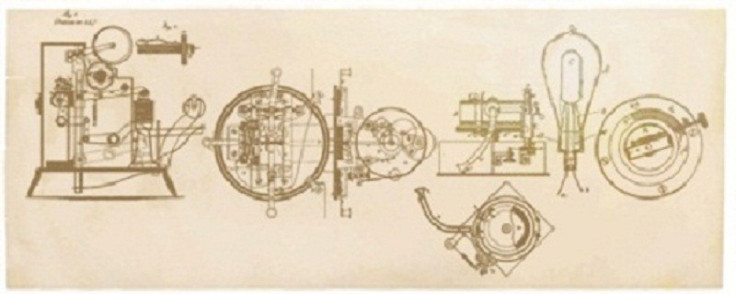Thomas Edison's Electric Bulb Lights on Google Doodle

For the first time, Google Inc. is celebrating American inventor Thomas Alva Edison's 164th birthday on February 11 with a new still moving doodle logo on its classic homepage featuring some of his best inventions.
The Edison's inventions' doodle included the incandescent lamps or electric light bulb, the phonograph or record player or gramophone, and the motion picture camera. Clicking on the doodle takes the user to a page displaying search results on the scientist.
This new doodle appeared just days after an interactive doodle logo was used to celebrate the 183rd birthday of the science fiction writer Jules Verne.
Doodles are known as the decorative changes that are made to the Google logo to celebrate holidays, anniversaries, and the lives of famous artists and scientists. While the doodle is primarily a fun way for the company to recognize events and notable people, it also illustrates the creative and innovative personality of Google itself.
The concept of the doodle was born when Google founders Larry Page and Sergey Brin played with the corporate logo to indicate their attendance at the Burning Man festival in the Nevada desert. A stick figure drawing was placed behind the 2nd o in the word, Google and the revised logo was intended as a comical message to users that the founders were out of office.
A year later in 2000, Larry and Sergey asked current webmaster Dennis Hwang, an intern then, to produce a doodle for Bastille Day. Pleased with the result, Dennis was then appointed Google’s chief doodler and doodles became a regular occurrence on the Google homepage.
Thomas Alva Edison was born in Milan, Ohio on February 11, 1847 and grew up in Port Huron, Michigan. He was an American inventor, scientist, and businessman who developed many devices that greatly influenced life around the world.
Thomas Edison began his career as an inventor in Newark, New Jersey, with the automatic repeater and his other improved telegraphic devices, but the invention that first gained him notice was the phonograph in 1877. Edison became known as The Wizard of Menlo Park, New Jersey.
Edison was one of the first inventors to apply the principles of mass production and large teamwork to the process of invention, and therefore, is credited with the creation of the first industrial research laboratory.
Edison's major innovation started at his first industrial research lab, which was built in Menlo Park, New Jersey with the funds from the sale of Edison's quadruplex telegraph. Edison is considered one of the most prolific inventors in history, holding nearly 1,500-plus patents worldwide for his inventions, out of that nearly 1,100 of patents were in the United States.
Edison's first patent invention was electrographic vote-recorder, which was permitted a yes or no vote via one of two switches. Washington congressmen were not interested in the device and the invention was unsuccessful.
Thomas Edison's greatest challenge was the development of a practical incandescent, electric light, according to About.com. Edison didn't invent the lightbulb, but rather improved upon a 50-year-old idea.
Edison's eventual achievement was inventing not just an incandescent electric light, but also an electric lighting system that contained all the elements necessary to make the incandescent light practical, safe, and economical. The first public demonstration of the Thomas Edison's incandescent lighting system was in December 1879, when the Menlo Park laboratory complex was electrically lighted.
The modern electric utility industry began in the 1880s. It evolved from gas and electric carbon-arc commercial and street lighting systems. On Sept. 4, 1882, the first commercial power station located on Pearl Street in lower Manhattan went into operation providing light and electricity power to customers in a one square mile area and then began the electric age.
In addressing the question of who invented the incandescent lamp, historians Robert Friedel and Paul Israel list 22 inventors of incandescent lamps or light bulb prior to Joseph Swan and Thomas Edison.
The historians concluded that Edison's version was able to outstrip the others as it has a combination of: an effective incandescent material, a higher vacuum than others were able to achieve (by use of the Sprengel pump), and a high resistance that made power distribution from a centralized source economically viable.
This year, Google has celebrated birthday of Jan Werich - Czech Republic, Almeida Garrett - Portugal, Tom Jobim - Brazil, Birthday of Takayanagi Kenjiro - Japan, Cezanne's 172nd Birthday - Global, and Khalil Gibran's Birthday - selected countries.
Google's doodle team has created over 300 doodles for Google.com in the United States and over 700 have been designed internationally. Some appear globally, and others are tailored for local markets outside the United States.
© Copyright IBTimes 2024. All rights reserved.





















